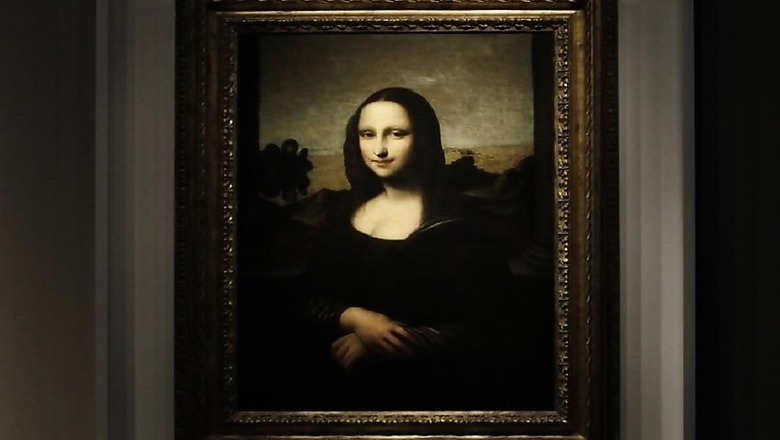
views
Houston: Italian polymath Leonardo da Vinci's muse for the iconic Mona Lisa painting may not have suffered from hypothyroidism as suggested by recent studies, scientists say.
Michael Yafi, from The University of Texas Health Science Center (UTHealth) in the US, noted that the painting doesn't match the countless other depictions of goiters or enlargements of the thyroid gland.
The painting of Lisa Gherardini has captivated millions since it was created in the early 1500s, including experts in the medical community.
For years, scientists and physicians have studied the discoloration of Gherardini's skin, the thickness of her neck, and her enigmatic smile to hypothesise about her health during the Renaissance time period.
The most recent published theory suggests she suffered from severe hypothyroidism, or underactive thyroid.
The researchers cite her yellow skin, the enlarged appearance of her thyroid gland, and lack of eyebrows as symptoms to support his theory.
They also noted that her mysterious smile may represent a hint of resulting psychomotor retardation and muscle weakness.
"I felt a personal responsibility to defend the Mona Lisa and the fascinating lady the painting portrays," said Yafi in a statement.
"She has inspired thousands of people over the past few centuries. I couldn't have the public thinking she had hypothyroidism when it seems to me she was euthyroid, meaning her thyroid was normal. So, I decided to give her a fresh 21st-century medical opinion," he said.
Yafi's research, published in Hormones-International Journal of Endocrinology and Metabolism, explains that the documentation of thyroid disease is well known in art history, and this painting doesn't match the countless other depictions of goiters.
"Artists often depicted what they saw in society. Sculptures from the ancient Andean and Egyptian civilisations recorded endemic goiters in areas of environmental iodine deficiency, like the Tuscany region where Gherardini lived," said Yafi.
"Ancient Greek art represents this symptom as well, as do several poetic works and even Shakespearean literature.
"If Gherardini had a goiter from iodine deficiency, it would have been severe and more clearly demarcated in the painting like the other historical representations; a talented painter like da Vinci would have had no problem expressing it," he said.
Yafi also points out that many of da Vinci's paintings depict women without eyebrows, so it's not conclusive to attribute that feature to an underactive thyroid.
He said the yellowing of the skin only develops after a long duration of the disease.
Typically, having long-term hypothyroidism would have severely affected fertility, but Gherardini is known to have given birth to five children, including one only months before sitting for the painting, said Yafi.
"The discolouration could simply be attributed to the age of the artwork, as well as the varnish applied by the artist. Furthermore, the painting was stolen and then hidden away for almost three years, and someone also once vandalized it with acid in an act of sabotage," he said.
"Making a diagnosis of hypothyroidism on the basis of subtle and vague features in an old painting is, needless to say, risky," Yafi said.
"Hypothyroid myopathy, or muscle tissue disease, manifests in muscles that are closer to the body's midline. It is usually severe, which means that it would have prevented Gherardini from posing with a straight back.
"Moreover, there are plenty of people who have an asymmetric smile, but this does not necessarily mean that they are hypothyroid," he said.


















Comments
0 comment